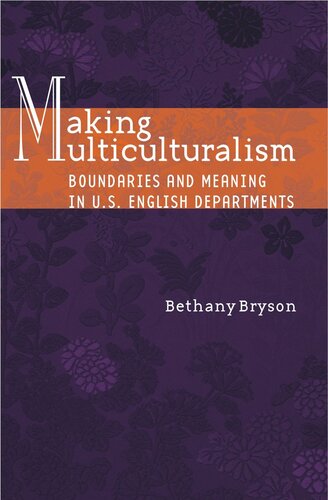

Most ebook files are in PDF format, so you can easily read them using various software such as Foxit Reader or directly on the Google Chrome browser.
Some ebook files are released by publishers in other formats such as .awz, .mobi, .epub, .fb2, etc. You may need to install specific software to read these formats on mobile/PC, such as Calibre.
Please read the tutorial at this link: https://ebookbell.com/faq
We offer FREE conversion to the popular formats you request; however, this may take some time. Therefore, right after payment, please email us, and we will try to provide the service as quickly as possible.
For some exceptional file formats or broken links (if any), please refrain from opening any disputes. Instead, email us first, and we will try to assist within a maximum of 6 hours.
EbookBell Team

4.3
88 reviewsMulticulturalism was a hot issue on college campuses in the 1990s, and it was a confusing issue, especially for English professors. Making Multiculturalism ventures into four college English departments to explore how professors made sense of multiculturalism. Their answers provide important insights into the "canon wars," multiculturalism, and cultural change. Defining meaning as a system of boundaries, Bryson uncovers specific mechanisms through which social institutions preserve themselves by imposing old meanings on new ideas. She connects those insights to some of today's most difficult cultural policy challenges, including campus (or workplace) diversity, individual responsibility, and the policy pitfalls of defining culture as something separate from social life. Bryson contends that cultural policy should abandon the "norms and values" definition of culture as individual beliefs and focus instead on the cultural implications of structure.